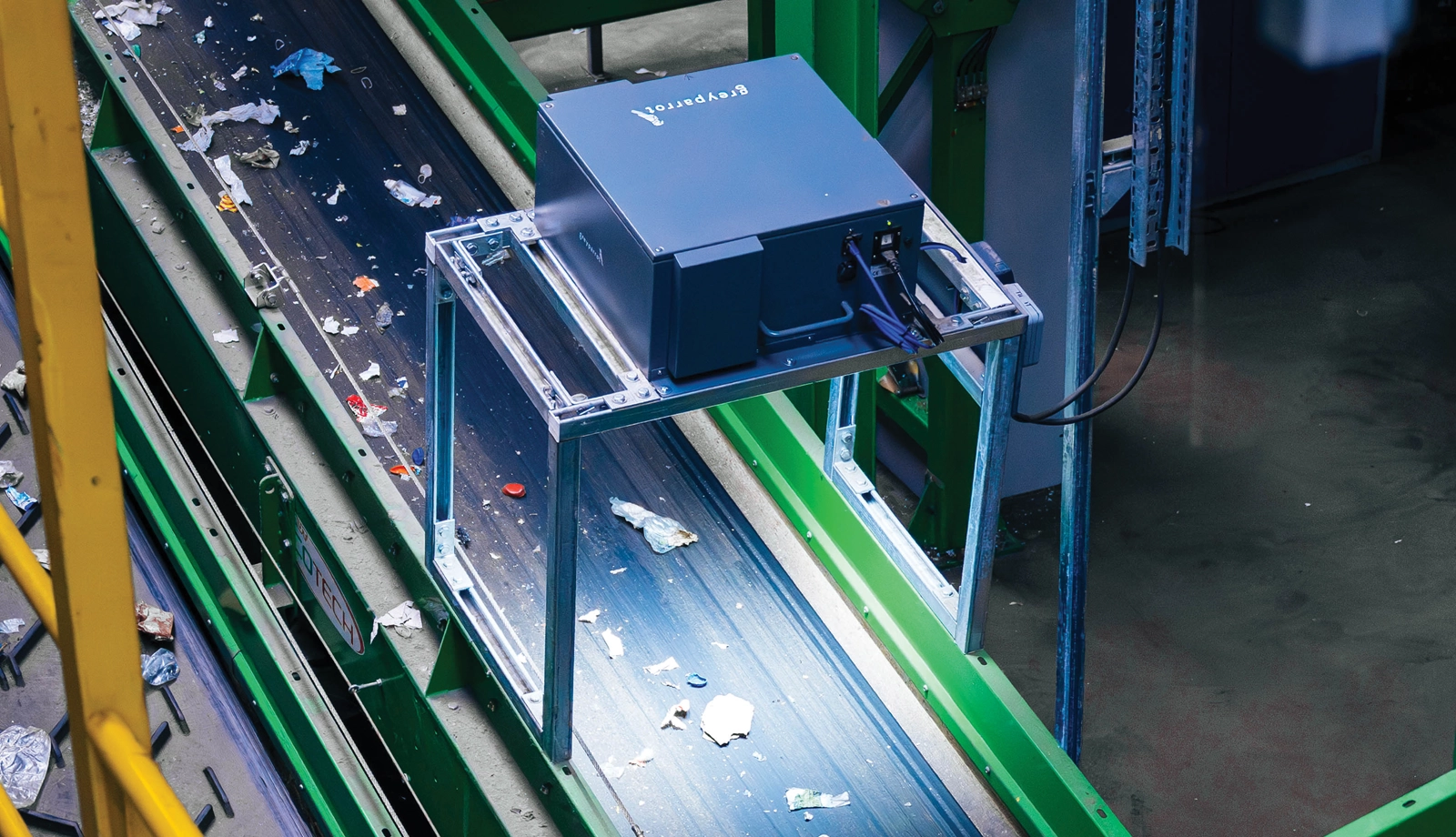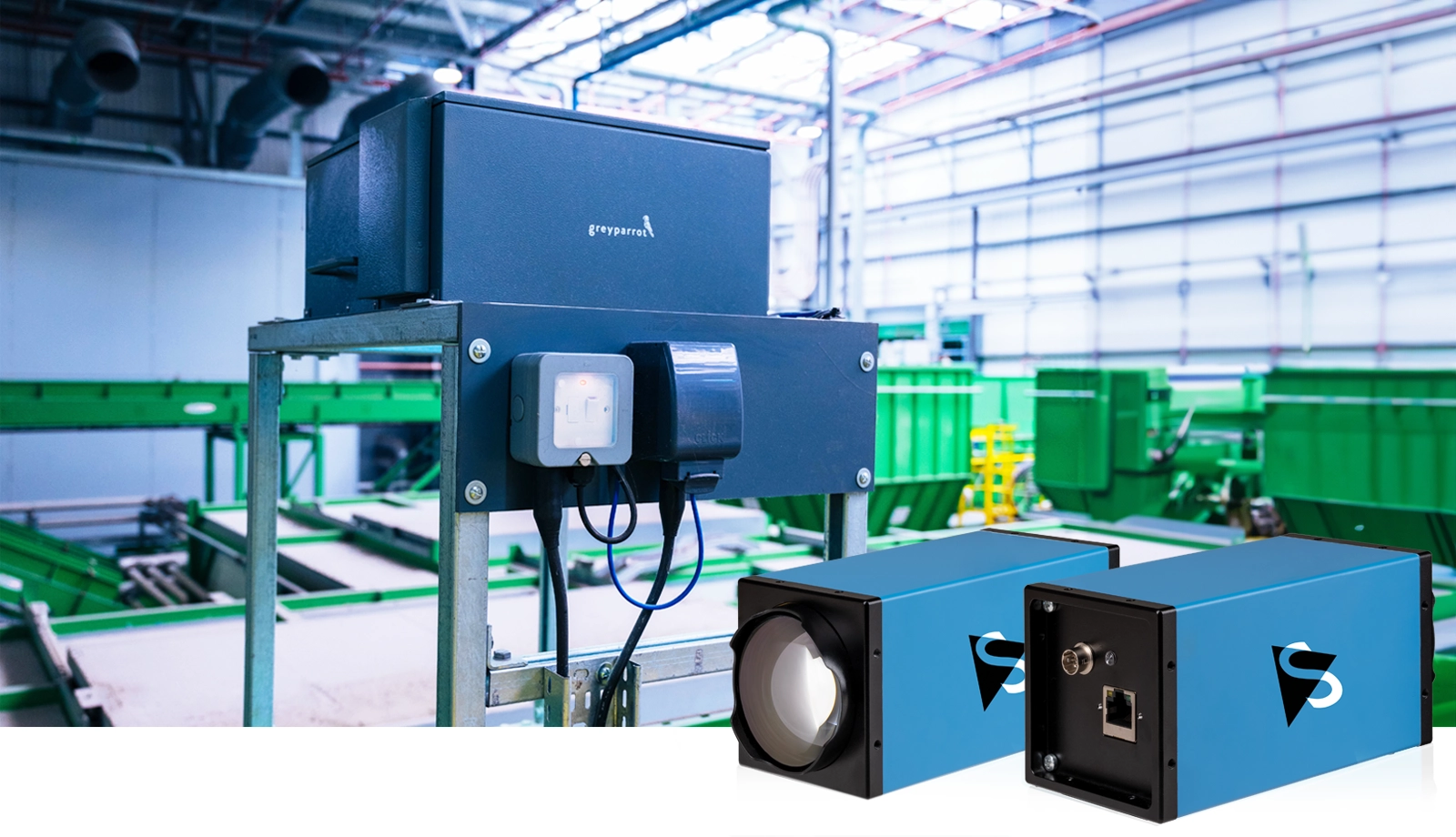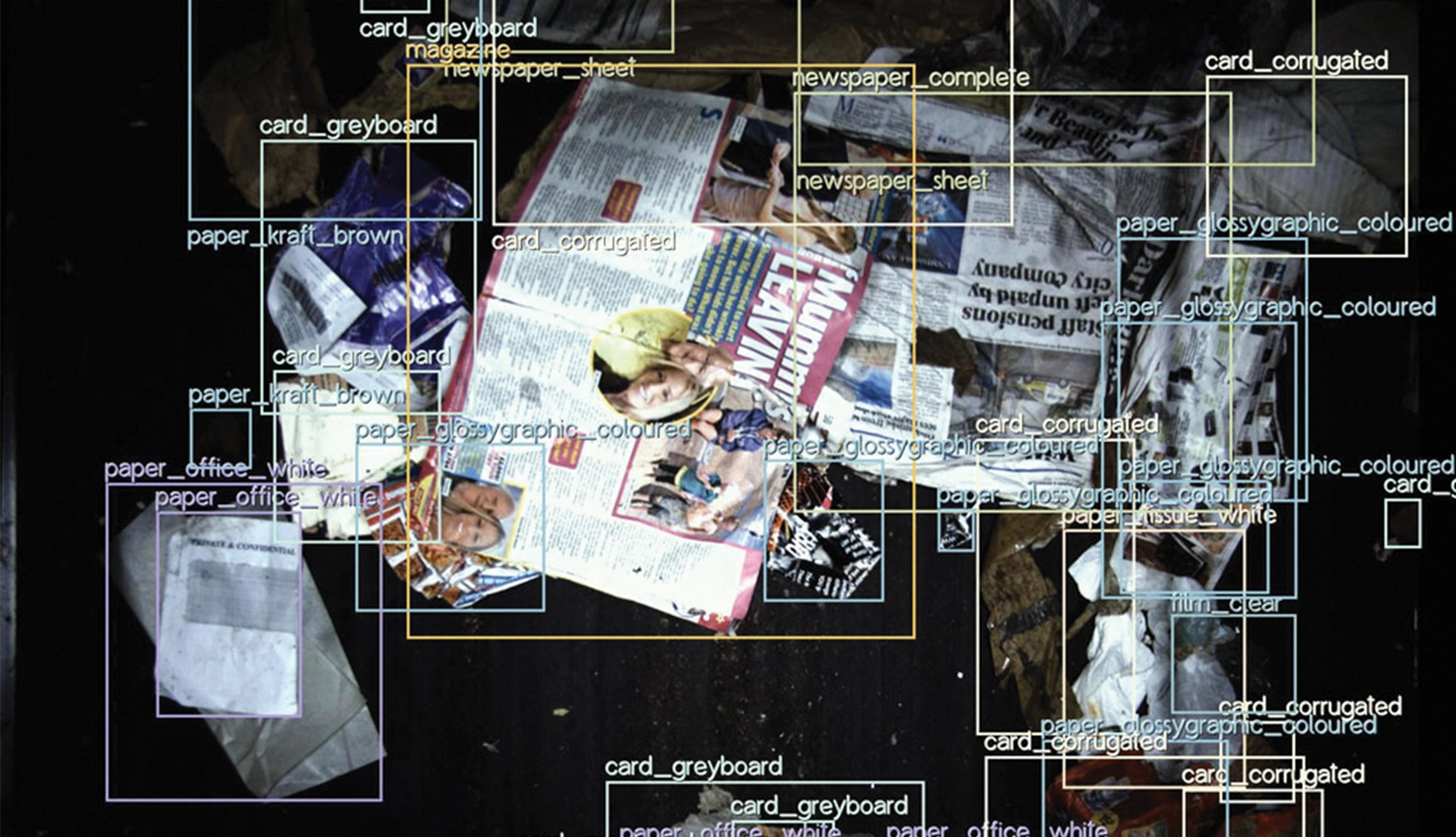Waste Intelligence: Industrial Zoom Cameras Deliver Imaging Flexibility for AI-Driven Waste Recovery
Published on October 2, 2024 by TIS Marketing.
By 2030, the global population will create 2.59 billion tons of municipal solid waste every year. As much as 95% of that material is recoverable, but World Bank data reveals that we recycle or compost just 19% of it. London-based AI developer, Greyparrot, has set out to address that challenge, using computer vision technology to increase recycling efficiency, and reduce the environmental impact of waste.
Integrated into the hardware unit of the company's flagship product, the Greyparrot Analyzer, is The Imaging Source's robust 20X optical zoom industrial camera, DFK 39GX265-Z20. The Analyzer unit's cameras gather live images of waste passing through sorting facilities. Greyparrot's waste recognition AI processes those images in real-time, providing facility managers with actionable insight that they use to improve sorting performance and report on their material.

Industrial Zoom Cameras: Imaging Flexibility and Easy Integration
The Analyzer system is designed to easily integrate into a recovery facility's existing processing infrastructure. Because equipment dimensions such as conveyor belt width are variable, the flexibility to control camera focus and field of view (FoV) efficiently are features critical for ensuring optimal image capture. This left the Greyparrot team with precise feature specifications for camera model selection: "Robustness, remote control of zoom and focus, GenICam standard and external trigger support were all essential," reports Alisa Pritchard, VP of Marketing at Greyparrot. The DFK 39GX265-Z20 met these criteria: Z20 zoom cameras allow for rapid adjustments to compensate for fluctuations in working distances, changing fields of vie w and lighting conditions. Pritchard continued, "the camera's software-controlled zoom and autofocus are very useful in allowing us to adapt to varying requirements across customer facilities."
Customized Imaging Solution
Operating conditions at recovery facilities can be harsh: temperature variation, humidity, vibration, high levels of dust and particulate matter are common factors. Pritchard further explains, "the system 'sees' and tracks every piece of waste entering a sorting or recycling plant, so a continuous stream of detailed waste data hinges on hardware uptime." To further harden the zoom camera's design, The Imaging Source worked with Greyparrot to customize the industrial camera with the addition of metal brackets to the camera's lens system.

Imaging Pipeline
The industrial zoom camera produces a live stream of images at approximately 32 frames per second. While the number of images the system analyzes depends on the conveyor speed, it typically analyzes every tenth image in exacting detail. The image data undergoes some basic preprocessing (e.g. intensity normalization) before going on to be analyzed by the system's trained convolutional neural network (CNN). The Analyzer system processes images locally in real-time, uploading the resulting data to the cloud-based Analyzer portal for their customers to access. The AI waste analytics system gathers 7 layers of detail about each waste item, identifying its material composition, mass, financial value, size, food-grade status, potential CO2 emissions, brand and SKU.

Large-Scale Visual Recognition Improves Composition Tracking
Over the past two decades, the shift towards automated waste processing and recovery has been dramatically accelerated by advancements in computer vision technology. Previously, facilities relied on inefficient manual spot sampling where the "gathered data accounted for just 1% of the material processed," according to Pritchard. By harnessing image data and deep learning, the Analyzer system automates the sampling process, unlocking valuable data on the previously untapped 99%. This not only boosts efficiency, but also drastically reduces costs: sampling 30 PET bales manually takes 375 hours and costs around 5100€, whereas the Analyzer accomplishes this in just 6 hours for approximately 20€ - making AI sampling about 250 times cheaper than traditional methods.
Moreover, Pritchard notes "Large-scale visual recognition fills a decades-long data gap for processing facilities: Technology like near-infrared sensors help facility operators differentiate between plastics, but don't capture the visual information needed to track the composition of overall waste streams. AI waste analytics systems provide that missing information." Greyparrot's innovative suite of API integrations, Greyparrot Sync, seamlessly connects the real-time waste data produced by the Analyzer to existing hardware and software across different brands, enhancing interoperability and data utilization in waste management facilities.
Data-Driven Insights Lead to Sustainable Packaging
Greyparrot is taking detailed waste data beyond the recovery facility floor, too. In 2023 alone, Analyzer units assessed 25 billion waste objects around the world, creating some of the world's most detailed waste datasets in the process. Brands and packaging producers are now looking to that insight to understand the recyclability of their products, and design more sustainable alternatives that are easier to recover. By "tracking packaging from design to disposal," these enormous datasets are providing invaluable insights on the real-world performance of packaging materials from manufacture to end of life. Pritchard commented, "Machine vision has been used in the waste sector for decades. With the growing need for the waste management sector to process and sort materials, the technology's ability to drive digitization and automation will become more vital than ever."
